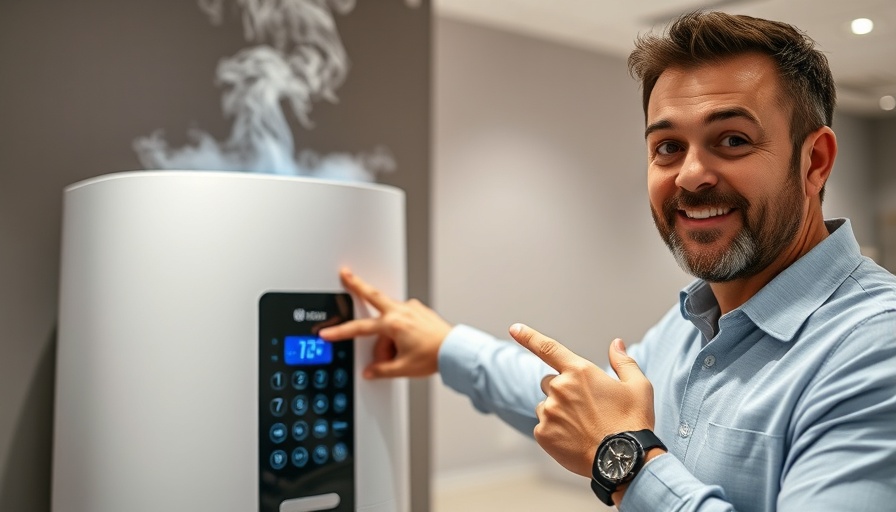
Installing a Whole Home Humidifier: A DIY Guide for Homeowners
Are you tired of dry air in your Houston home, especially during the colder months? Installing a whole home humidifier could be the simple solution you need! In this article, we’ll break down the process of installing a steam humidifier on your central HVAC system, from start to finish, ensuring you feel comfortable going into this DIY project.
In 'How To Install A Whole Home Humidifier From Start To Finish', the video unpacks the entire installation process, giving homeowners critical insights that we’re elaborating on in this article.
What is a Whole Home Humidifier?
A whole home humidifier connects directly into your existing HVAC system to maintain ideal humidity levels throughout your entire home. Proper humidity not only improves comfort levels but also helps with common issues like dry skin and allergies. For most homes, an optimal humidity level is around 45%.
Understanding the Benefits of Proper Humidity
Humidity affects how comfortable you feel in your home. At 33% humidity, the air can feel colder, and you could be susceptible to dry skin or respiratory issues. With a whole home humidifier, maintaining that ideal 45% humidity makes it easier to breathe and keeps your skin hydrated, making it feel warmer indoors. Plus, with better humidity, you might even reduce your energy costs as moist air feels warmer!
Gather Your Tools and Materials
Before diving into the installation, it's essential to gather all necessary materials. Here's a list of what you’ll typically need:
- Steam humidifier unit (e.g., April Air Steam Humidifier)
- Drain hose
- Water supply line (PEX pipe)
- Electrical connections (including a pigtail for connection)
- Mounting screws
- Tools such as a drill, screwdriver, plumbing wrench, and a step bit for cutting holes
Be sure to have everything on hand to streamline the installation process.
Step 1: Choosing the Right Location
The first step in installing your humidifier is finding a suitable location on your HVAC system. It should be at least 16 inches clear of other units or obstacles. This space ensures that your humidifier operates effectively without obstruction.
Step 2: Mounting the Humidifier
Mount the humidifier securely in the selected location. Most units will have several mounting holes. Use screws to attach it firmly to your HVAC system's plenum or duct.
Step 3: Connecting the Water Supply
To provide the humidifier with water, you'll need to install a connection to your cold water line. A saddle valve may be used here to tap into the existing line without shutting off your water supply. This step might require working with copper pipes, so if you're unsure, consult a professional. Houston has some excellent HVAC installers who can assist if needed.
Step 4: Setting Up the Drainage
Next, connect the drain hose to ensure that excess water can escape properly. This is crucial as stagnant water can lead to mold growth and other issues. Make sure everything is secured and leak-proof.
Final Steps: Electrical Connections
Lastly, it's essential to follow the manufacturer's instructions for your specific humidifier model, especially regarding electrical connections. A common mistake is wiring it incorrectly, so take your time. If you aren't comfortable with electrical work, consider calling a licensed HVAC technician.
The Importance of Regular Maintenance
Once installed, your new whole home humidifier will need regular maintenance to keep functioning effectively. This includes changing any filters, checking for leaks, and referring to your unit’s manual for additional recommendations. In humid climates like Houston, maintaining your system helps prolong its lifespan and efficiency.
Conclusion: Ready to Embrace a Moisture-Rich Home?
In conclusion, adding a whole home humidifier is a fantastic way to improve your comfort while potentially saving on heating costs. With simple steps to install it and special attention to detail during maintenance, your home will not only feel cozier but also boost your overall air quality.
For professional assistance, look into licensed HVAC technicians in Houston or the best air conditioning repair services in Houston for any complex issues.
 Add Row
Add Row  Add
Add 




Write A Comment